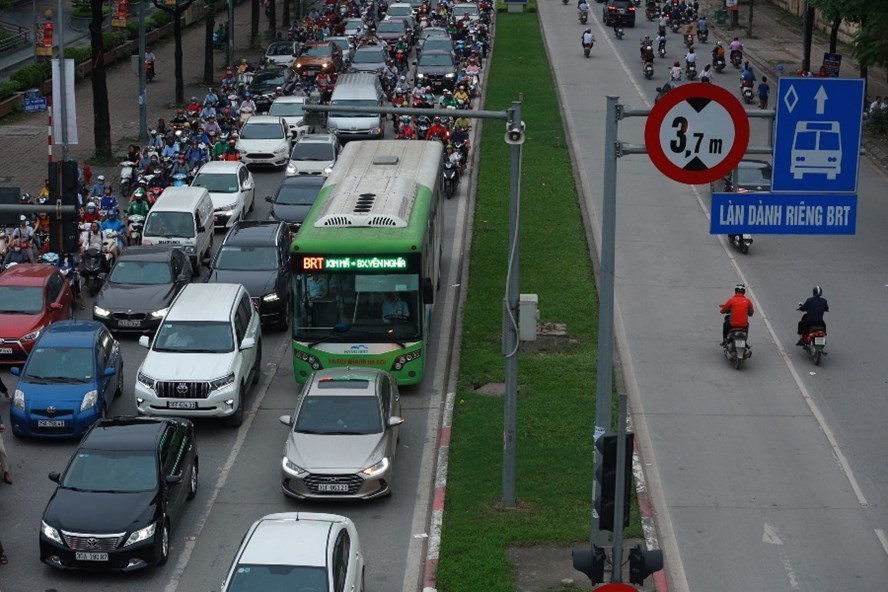According to the Hanoi Transport Service Company (Transerco), the route has 35 buses, carrying around 90 passengers each.
 |
|
A bus of Hanoi's BRT route faces traffic jam
|
Last year, the route served 5.3 million passengers, accounting for just half of capacity.
Dr. Nguyen Xuan Thuy, former director of and editor-in-chief of Transport Publishing House, “Initially, I disagreed with the project and over two years it's proved its inefficiency, and wasteful level of investment.”
According to Thuy, Hanoi should not develop BRT projects in the next 5 - 7 years as up to 50 - 60% of the city’s roads are too narrow to accommodate BRT standard routes.
“BRT stops are quite large, but few passengers use them,” Thuy noted.
Bui Danh Lien, chairman of the Hanoi Transport Association, agreed with Thuy on the BRT line’s failures.
Associate Prof. Dr. Dinh Thi Thanh Binh from The Hanoi University of Transport and Communications said BRT projects are effective for long routes with large numbers of passengers.
Dr. Phan Le Binh, infrastructure engineering lecturer at the Vietnam-Japan University, said that Hanoi needs to have a long-term strategy for the development of a BRT network, instead of just a line at present. It was important to arrange separate lanes for BRT routes.
Le Nhu Tien, a former National Assembly deputy, said the BRT project in Hanoi was unfeasible and should be discontinued, he remarked, adding that the individuals concerned should take responsibility.
The Government Inspectorate earlier cited loses of billions of Vietnamese dong in the project’s development.
The Hanoi BRT project cost more than VND1 trillion (USD44.64 million) funded by official development assistance loans from the World Bank.
Lao Dong/Dtinews
 Hanoi’s first bus rapid transit (BRT) line has not run at full capacity after two years of operation.
Hanoi’s first bus rapid transit (BRT) line has not run at full capacity after two years of operation.